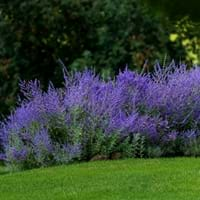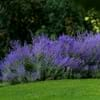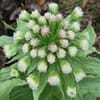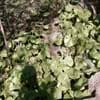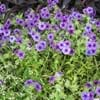Life Span
Perennial
Perennial
Type
Flowering Plants
Flowering Plants, Fruits, Trees
Origin
Hybrid origin
Central America, Europe, North America
Types
Perovskia atriplicifolia LACEY BLUE, Perovskia atriplicifolia ‘Rocketman’
Not Available
Habitat
Not Available
Hedge, Scrubs, Woods
USDA Hardiness Zone
4-9
4-8
AHS Heat Zone
9-6
Not Available
Sunset Zone
2a, 2b, 3a, 3b, 4, 5, 6, 7, 8, 9, 10, 11, 12, 13, 14, 15, 16, 17, 18, 19, 20, 21, 22, 23, 24
Not Available
Habit
Clump-Forming
Not Available
Flower Color
Lavender, Blue Violet
White
Flower Color Modifier
Bicolor
Not Available
Fruit Color
Not Available
Yellow
Leaf Color in Spring
Gray Green, Silver
Dark Green
Leaf Color in Summer
Gray Green, Silver
Green
Leaf Color in Fall
Gray Green, Silver
Brown, Green, Light Yellow
Leaf Color in Winter
Silver
Not Available
Leaf Shape
Grass like
Oblong
Plant Season
Spring, Summer, Fall
Summer
Sunlight
Full Sun
Full Sun, Partial shade
Type of Soil
Loam, Sand
Loamy
The pH of Soil
Neutral, Alkaline
Neutral
Soil Drainage
Well drained
Well drained
Bloom Time
Summer, Late Summer, Early Fall, Fall
Fall, Summer
Tolerances
Drought, Salt
Drought
Where to Plant?
Container, Ground, Pot
Ground
How to Plant?
Stem Planting
Grafting, Seedlings, Transplanting
Plant Maintenance
Low
Medium
Watering Requirements
Allow soil to be completely dry in between waterings, Do Not over Water
Medium
In Summer
Lots of watering
Lots of watering
In Spring
Moderate
Moderate
In Winter
Average Water
Average Water
Soil pH
Neutral, Alkaline
Neutral
Soil Type
Loam, Sand
Loamy
Soil Drainage Capacity
Well drained
Well drained
Sun Exposure
Full Sun
Full Sun, Partial shade
Pruning
Prune in early spring, Prune regularly
Prune when plant is dormant, Remove dead or diseased plant parts
Fertilizers
All-Purpose Liquid Fertilizer
All-Purpose Liquid Fertilizer
Pests and Diseases
Chlorosis, Red blotch
Aphids, Curculio occidentis, Japanese Beetles, Leaf Rollers, Leafminer, Mites, Red blotch, sawflies, Scale, Stink bugs
Plant Tolerance
Drought, Salt
Drought
Flower Petal Number
Single
Single
Fragrant Bark/Stem
Yes
No
Foliage Texture
Fine
Medium
Foliage Sheen
Matte
Matte
Attracts
Butterflies
Not Available
Allergy
Skin irritation, Toxic
Digestive Problems, Respiratory problems
Aesthetic Uses
Landscape Designing
Showy Purposes
Beauty Benefits
Not Available
Beautiful Skin
Environmental Uses
Insect Repellent
Food for birds
Medicinal Uses
Treating fever
Anthelmintic, Antibacterial, Astringent, Hypnotic, Laxative, Refrigerant
Part of Plant Used
Flowers, Leaves
Fruits
Other Uses
Culinary use, Oil is used in mosquito repellents, Used as Ornamental plant
Edible syrup, Jam, Jelly, Used As Food
Used As Indoor Plant
No
No
Used As Outdoor Plant
Yes
Yes
Garden Design
Dried Flower / Everlasting, Cutflower, Feature Plant, Foundation, Mixed Border
Not Available
Botanical Name
Perovskia atriplicifolia
Malus sylvestris
Common Name
Longin Russian Sage, Russian Sage
European crab apple
In Hindi
Russian Sage
european crab apple
In German
russische Sage
Der Holzapfel, Europäischer Wildapfel
In French
sabio ruso
Le Boquettier, le Pommier sauvage ou Pommier des bois
In Spanish
Sage ruso
Malus sylvestris, el Manzano silvestre, manzano silvestre europeo
In Greek
Ρωσική Sage
Ευρωπαϊκή μήλο καβουριών
In Portuguese
Sábio russo
Malus sylvestris
In Polish
rosyjski Sage
Jabłoń dzika
In Latin
Russian Sage
european crab apple
Phylum
Magnoliophyta
Magnoliophyta
Class
Magnoliopsida
Magnoliopsida
Family
Lamiaceae
Rosaceae
Clade
Angiosperms, Asterids, Eudicots
Angiosperms, Eudicots, Rosids
Tribe
Mentheae
Not Available
Subfamily
Not Available
Not Available
Number of Species
Not Available
Not Available
Season and Care of Russian Sage and European Crab Apple
Season and care of Russian Sage and European Crab Apple is important to know. While considering everything about Russian Sage and European Crab Apple Care, growing season is an essential factor. Russian Sage season is Spring, Summer and Fall and European Crab Apple season is Spring, Summer and Fall. The type of soil for Russian Sage is Loam, Sand and for European Crab Apple is Loamy while the PH of soil for Russian Sage is Neutral, Alkaline and for European Crab Apple is Neutral.
Russian Sage and European Crab Apple Physical Information
Russian Sage and European Crab Apple physical information is very important for comparison. Russian Sage height is 90.00 cm and width 90.00 cm whereas European Crab Apple height is 25.00 cm and width 20.00 cm. The color specification of Russian Sage and European Crab Apple are as follows:
Russian Sage flower color: Lavender and Blue Violet
Russian Sage leaf color: Gray Green and Silver
European Crab Apple flower color: White
- European Crab Apple leaf color: Dark Green
Care of Russian Sage and European Crab Apple
Care of Russian Sage and European Crab Apple include pruning, fertilizers, watering etc. Russian Sage pruning is done Prune in early spring and Prune regularly and European Crab Apple pruning is done Prune when plant is dormant and Remove dead or diseased plant parts. In summer Russian Sage needs Lots of watering and in winter, it needs Average Water. Whereas, in summer European Crab Apple needs Lots of watering and in winter, it needs Average Water.
